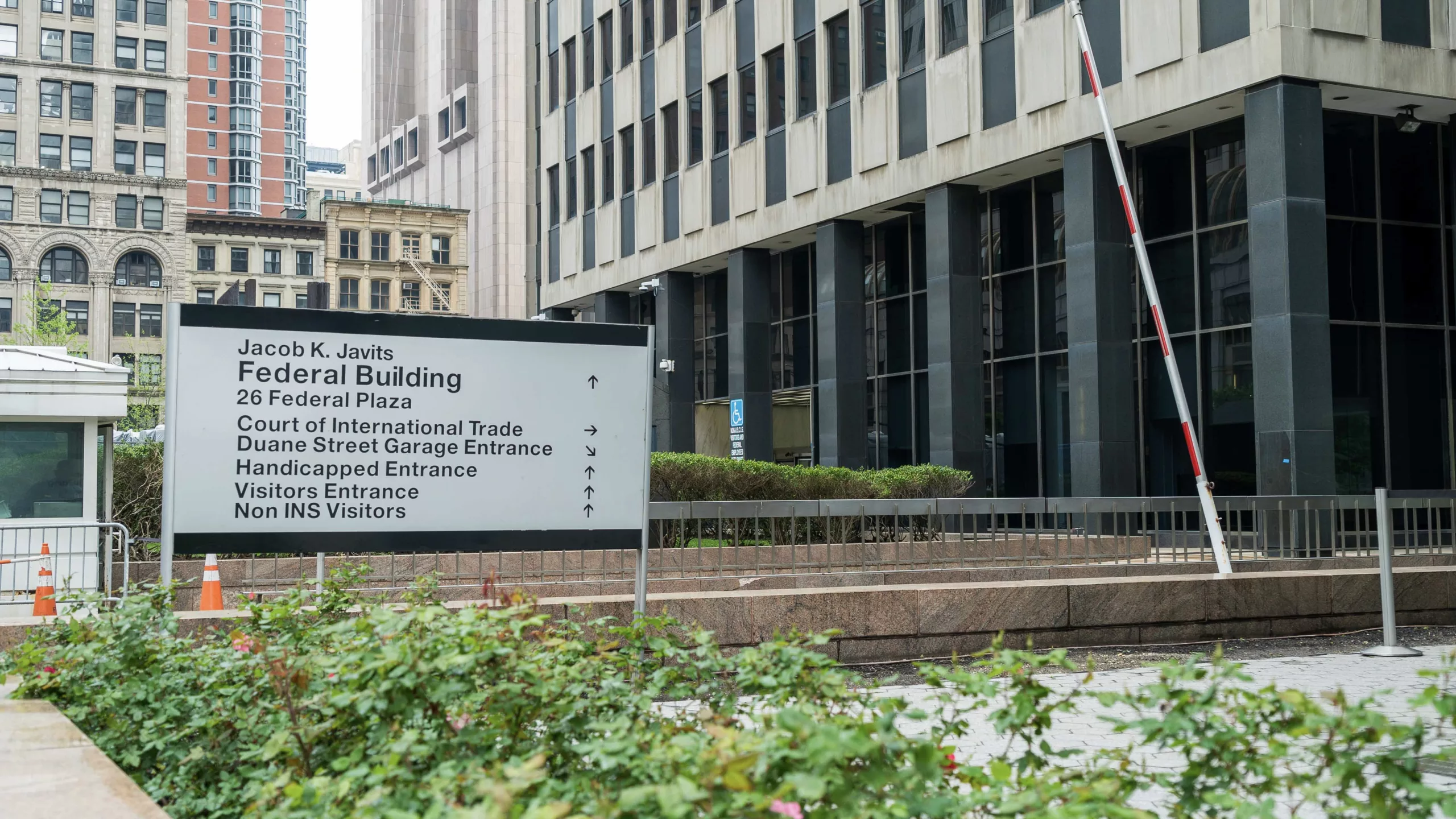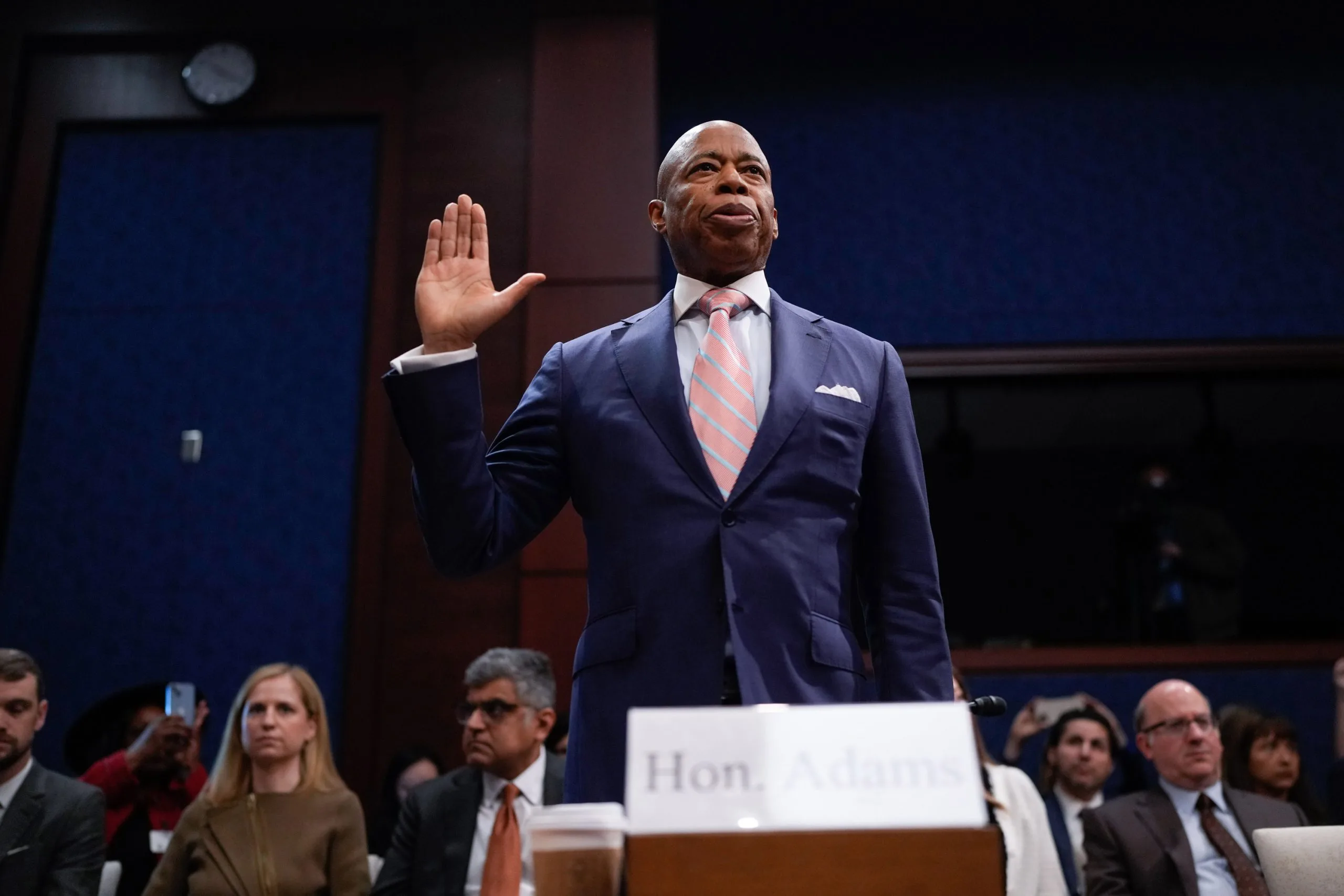Amid piles of boxes, plastic mannequins, sewing machines, racks of feathered backpacks, bejeweled bodywear and other materials, half a dozen Caribbean artisans work tirelessly, rushing to meet the deadline for New York City’s most important Caribbean celebration.
These individuals are among the hundreds of “invisible hands” behind the beautiful costumes that will adorn masqueraders on Eastern Parkway during the 57th annual West Indian American Day Parade, which takes place September 2 this year. They are responsible for sparking smiles from hundreds of children who will fiercely parade two days earlier during the Junior Carnival.
This small team—mostly women—is responsible for maintaining the prestige of Sesame Flyers’ Mas band, which has won the band of the year title 13 times since its inception in 1991.
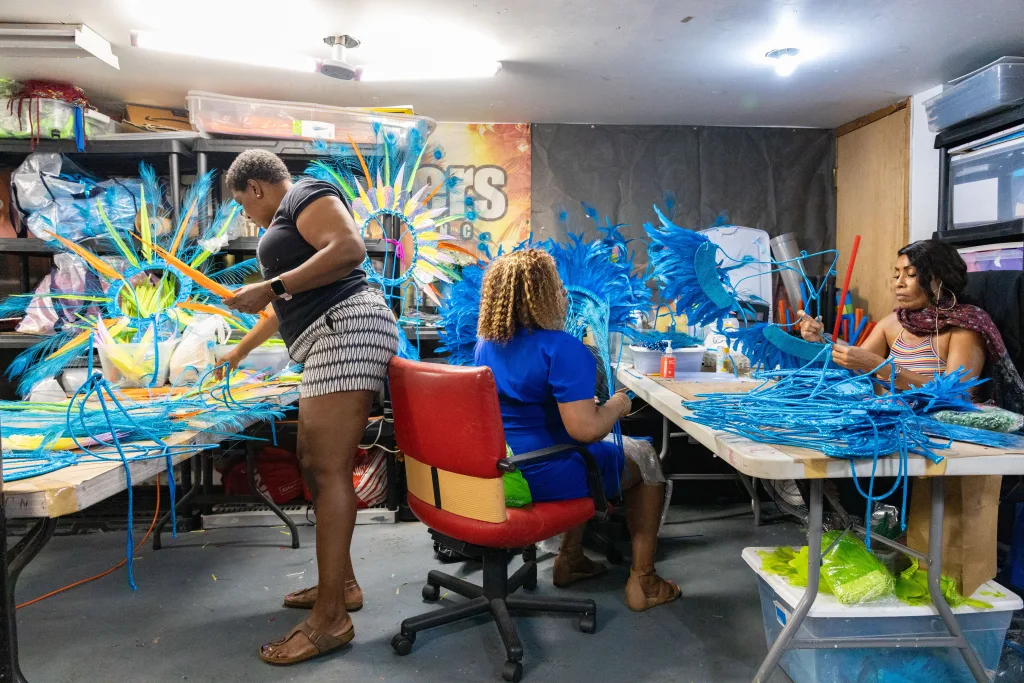
The team of six works in a rhythmic manner, stitching, gluing and taping late into the night from 5 p.m. to midnight several days a week at the band’s mas camp on Church Avenue in Brooklyn to meet the demand. At least 600 costumes must be ready for this year’s Junior Parade and the West Indian American Day Parade, under the theme “Carnival Renaissance—The Awakening,” meant to symbolize a new era in NYC’s carnival culture.
“No matter what, we will be on time,” said Tracey Clarke, the main designer. Clarke is a 43-year-old Jamaican immigrant who came to New York 24 years ago to fulfill her dream of becoming a designer. She pours her heart into preserving a Caribbean tradition she has cherished since childhood.
Above the small crew, there is a showroom filled with mannequins displaying various styles of costumes, all Clarke’s creations. Loudspeakers continuously play soca and dancehall songs, and a big-screen TV showcases masqueraders in their costumes, often featuring Clarke herself and other Sesame Flyers International staff members.
Lorraine Gonzalez, Tracey Salomon, Petula Clarke, Beverley Nelson and Shirnelle Marshall, each with different day jobs across various industries, create costumes this year for the West Indian Day Parade. Despite their diverse careers, they come together each year to uphold a tradition vital to New York City’s Caribbean culture.
The group’s youngest member is Kristian Wolfe, 13, who dreams of becoming a designer. Therefore, he spends days watching the women work and learning the craft. “He is phenomenal, creative, respectful, well-mannered and super smart. I called him an old soul. My goal is to have him replace me in Sesame,” said Clarke.

While Clarke manages the small crew, she also worked on a special order this year. She was tasked with designing a costume for Laurie Cumbo, the Commissioner of Cultural Affairs for the New York City Department of Cultural Affairs (DCLA). Clarke also creates daily social media content and manages the Sesame Carnival Instagram account, updating over ten thousand followers on the Band’s latest developments.
The junior Band receives their costumes two days before the junior parade on Saturday, August 31 and the adults receive theirs after.
The Makings Of Mas
After Clarke designed and created costume prototypes according to the Band’s theme, this team creates the backpacks using soldered copper wires and covers them with spandex. They later adorn them with multiple colorful feathers, glued on one by one with great care. “This is something I do with so much love,” said Nelson. “People don’t understand the amount of work that goes into a costume production. They just see it. But it takes a lot to get this done,” said Marshall.
As the women work to meet the deadlines, they share meals, talk about their lives and past carnival experiences and discuss many other things, such as how the upcoming election results might affect their immigrant community.”It’s therapeutic to me,” said Gonzales. “It’s a way of socially interacting with people in my community, especially with women. It’s also a place where we congregate with people of different ages. So you learn a lot about life, we can talk about different things. So, It’s a part of my peace.”
Many of these artisans wear on their arms, and sometimes on their faces, the scars resulting from the burns of the hot glue gun they use to stick each feather on the backpacks.
“It’s fun to work on the costumes, except the glue sometimes burns. You have to have patience, but I have patience to get burned,” said Nelson with a big smile. She gained that patience from 25 years of experience making costumes for different Mas bands in New York City.
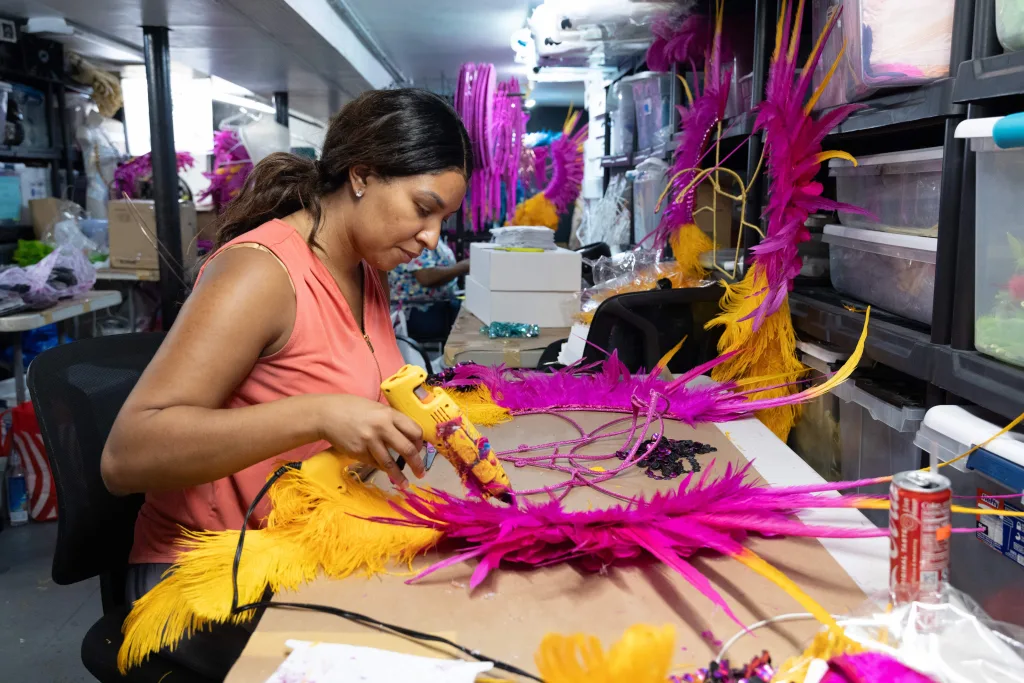
A Tradition In Transition
Before the 2020 COVID-19 pandemic, Caribbean artisans in the mas camp produced all the costumes for the band. Clarke said she managed a larger team of up to 25 people. However, Sesame Flyers failed to deliver some costumes due to production issues, leaving some clients unhappy.
“Many workers didn’t show up on time, they were not committed, and they were unreliable,” Clarke said. As a result, Clarke had to work longer hours, often sacrificing sleep to meet deadlines and ensure people received their costumes on time. Since the problem has become recurrent, by 2021, Sesame Flyers decided to partner with a manufacturing company in China to produce some parts of the costumes.
According to Clarke, this decision sparked controversy in the community, with people complaining about outsourcing jobs from Caribbean workers to China. “But when you pay and put your order in on time, they deliver. “They’re not as accurate as mine, but they are close enough.”
The Chinese manufacturer typically takes a month to deliver. When the boxes arrive, Clarke and her team take inventory, sort, package and oversee the distribution.
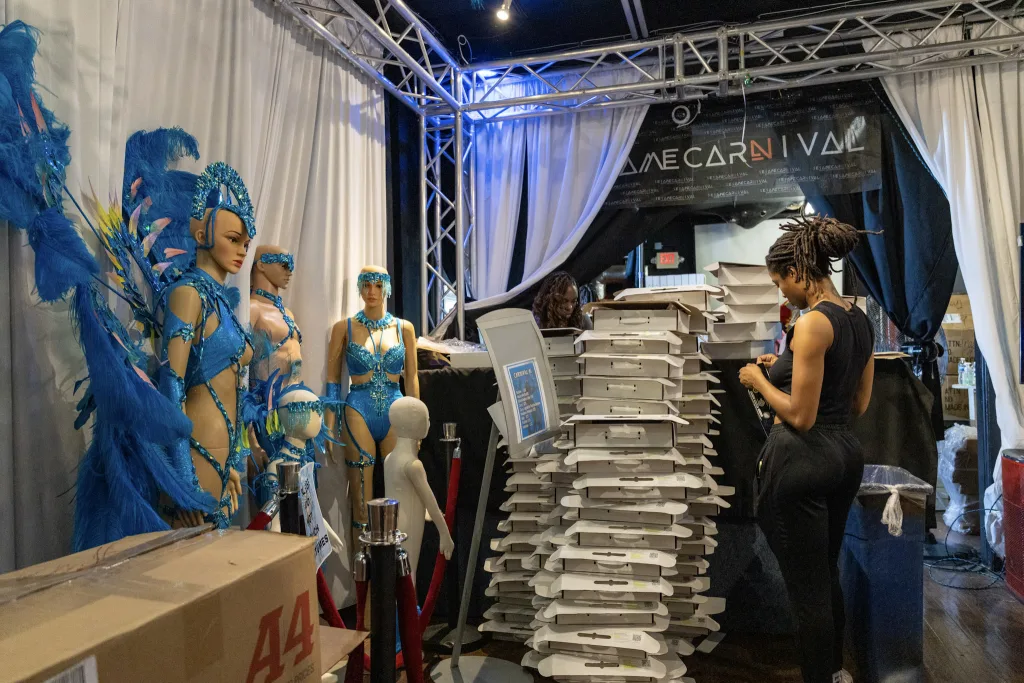
As the big day approaches, Sesame Flyers becomes a hive of activity. New volunteers arrive to pack boxes with costumes for the kids. Some workers carefully arrange the packages on soft white paper, while others affix stickers indicating the costume size and recipient names. The Sesame Flyers logo, this year’s theme, Carnival Renaissance and the names of sponsors are attached to the top of each box.
On Labor Day, this team behind the mas will parade down Eastern Parkway on the Sesame Flyers float. From above, they will wear the costumes they made by hand and enjoy the Carnival while watching the excitement on hundreds of faces down on the streets wearing their creations.
“It’s a whole different energy on Labor Day. It’s like an adrenaline rush,” said Marshall.
“I enjoy it, and I just love the feeling of Labor Day. I love the excitement and am ready to jump,” said Salomon.
“You give so much emotion, tears come down your eyes, especially when you see them across the stage where they wear over something that you took your time and care about. It feels like you gave us a personalized Christmas present or a birthday gift. It’s like you’re sharing that person’s moment,” Gonzales said.
After the parade, thoughts will turn to the next year. Sesame Flyers will continue working on various community activities. Tracey and her sister will travel to Miami, where she has settled for the past two years. The other women will continue to gather in the Little Caribbean neighborhood at Sesame Flyers, maintaining the sisterhood they have developed over the years.
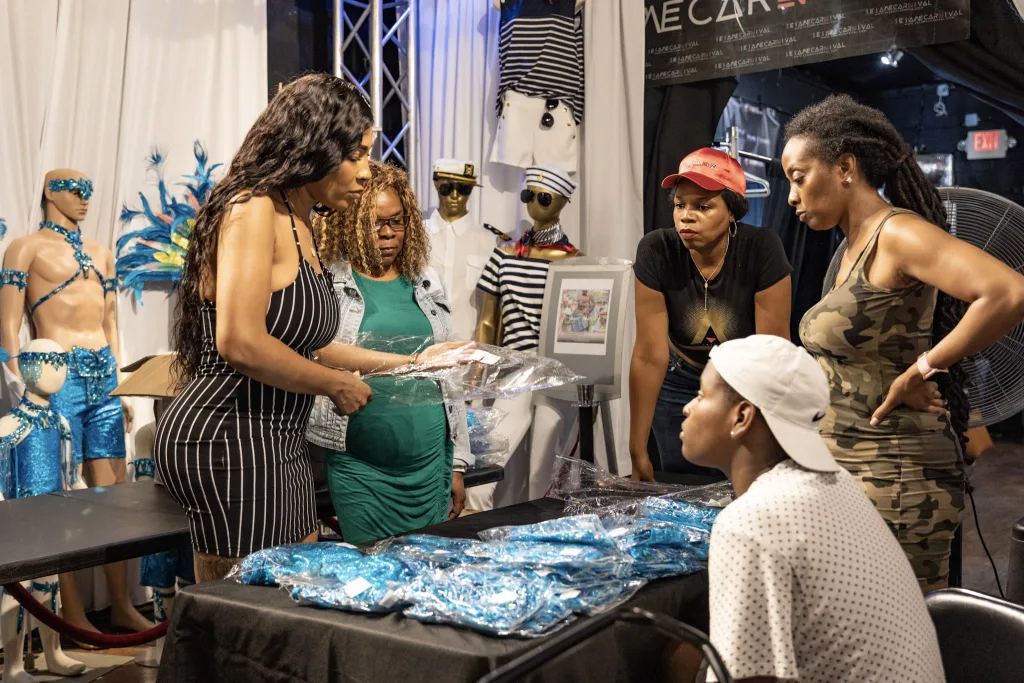
Carnival At A Crossroads
According to Clarke, Sesame Flyers used to make 1,000 costumes. “Now, we’re seeing fewer and fewer,” she said. “The numbers have dropped, especially after the pandemic. Many of the big mas bands are gone.”
Clarke believes that the New York Carnival is losing its appeal over time. She notes that young people are becoming less interested in the craft of costume making, which makes Carnival vibrant and beautiful. Many older masqueraders have moved elsewhere to celebrate, and some big traditional mas bands have disappeared.
She feels the parade should be moved off Eastern Parkway. Clarke explains that masqueraders are often disappointed after spending money on costumes they only get to wear for a few hours. She suggests combining J’Ouvert with the Carnival and relocating the parade to another place where masqueraders could have a better and longer experience. She added that the mas bands need more financial support from the carnival committee, as costume sales alone cannot cover the costs.
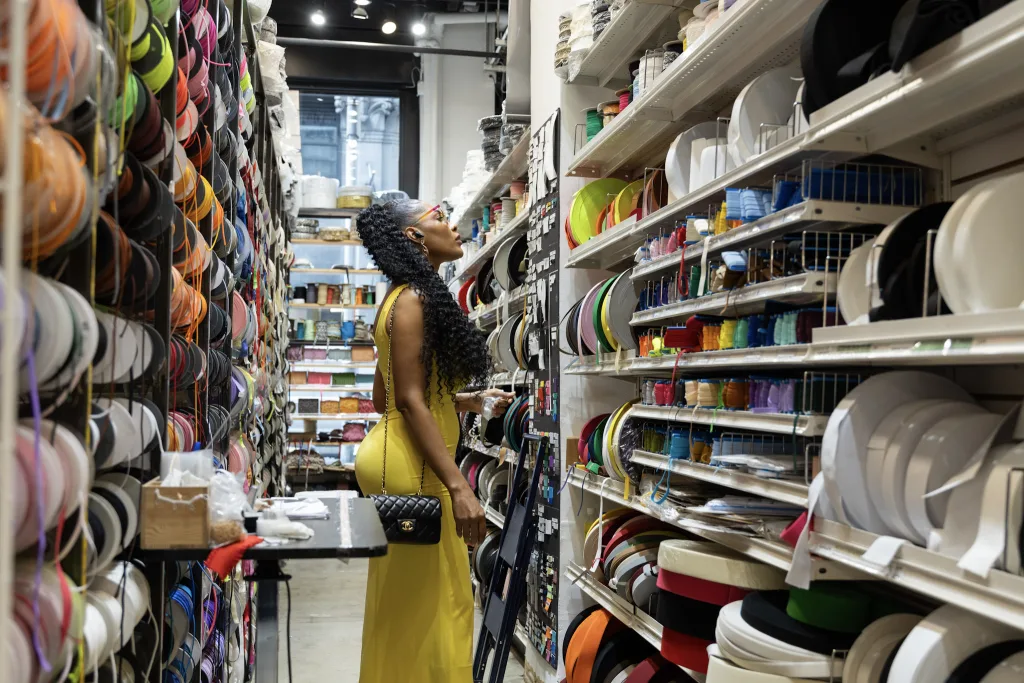
However, Sesame Flyers International Executive Director Curtis Nelson remains optimistic about the future. “Sesame Flyers is committed to respecting the artwork and the artists. The tradition is being passed down to younger generations. We have a pipeline in place to help the younger generation learn how to develop design concepts and bring them to life,” he said.
This year, with the theme “Carnival Renaissance,” Sesame Flyers, a cultural cornerstone of NYC’s Caribbean carnival scene, encourages the honoring of rich traditions from the past while embracing future possibilities. The organization aims to lead a movement that ensures the legacy of Carnival endures by merging tradition with innovation to create a transformative and lasting experience.








